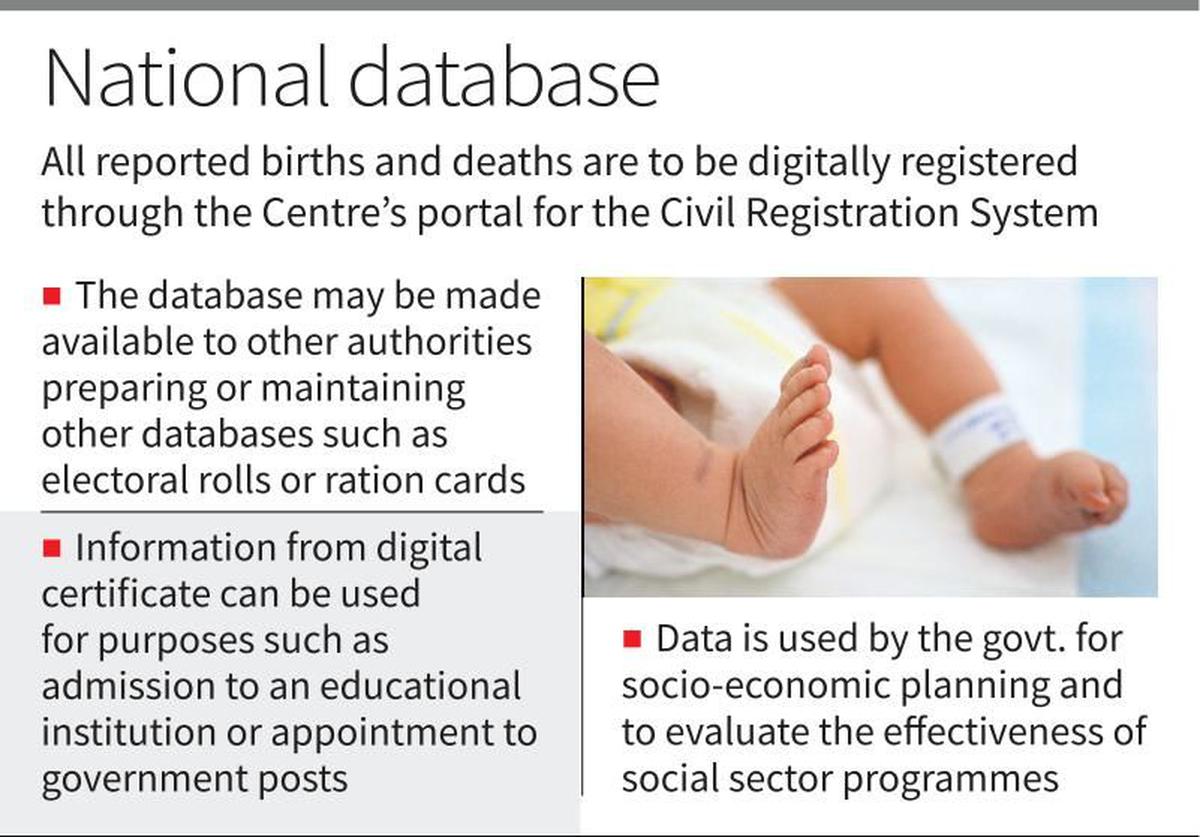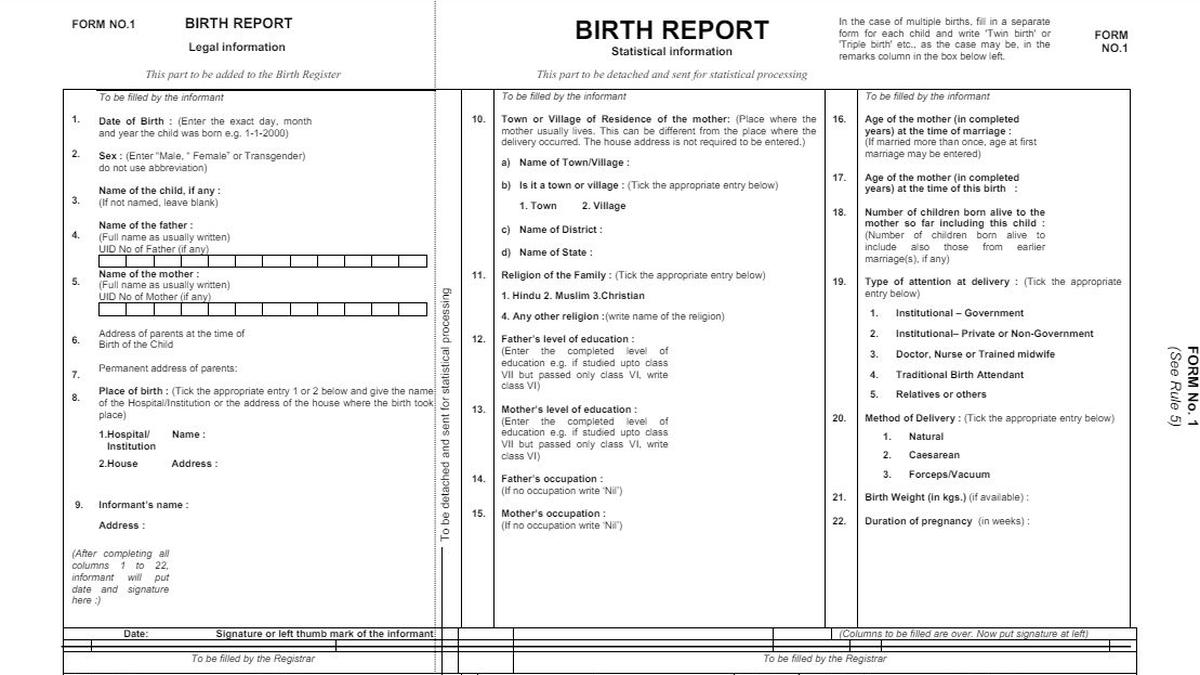
Earlier, only the family’s religion was recorded in birth registers. The proposed “Form No.1-Birth Report” will expand the column requiring a tick mark selection “for religion” of the child to now also state the “religion of father” and “religion of mother”. Photo: crsorgi.gov.in
When registering the birth of a child, parents will now be required to separately record the religion of both the child’s father and mother, according to Model Rules drafted by the Union Ministry of Home Affairs. These Rules will have to be adopted and notified by State governments before they are implemented.
Earlier, only the family’s religion was recorded in birth registers. The proposed “Form No.1-Birth Report” will expand the column requiring a tick mark selection “for religion” of the child to now also state the “religion of father” and “religion of mother”. Similar changes have been made for parents of an adopted child.
According to the Registration of Births and Deaths (Amendment) Act, 2023, passed by the Parliament on August 11 last year, the birth and death database will be maintained at the national level and may be used to update the National Population Register (NPR), electoral rolls, Aadhaar number, ration card, passport, driving licence, property registration, and such other databases as may be notified.
Digital records
According to the law, which became effective October 1 last year, all reported births and deaths in the country are to be digitally registered through the Centre’s portal for the Civil Registration System (crsorgi.gov.in).
The digital birth certificates issued under this system will become a single document to prove the date of birth for various services, including admission to educational institutions.
The office of the Registrar General of India (RGI) under the MHA has proposed substituting the existing forms related to the registration of births, deaths, still births, adoptions, and the Medical Certificate of Cause of Death (MCCD) as per the draft rules. The MCCD will also include the “history of illness, if any” from now on, apart from the actual cause of death.
Statistical and legal info
Any birth register includes two parts: legal information and statistical information. The information on the parents’ religion is to be maintained for statistical information.
The birth register form pertaining to legal information has been expanded to record the Aadhaar number, and the mobile and e-mail IDs of both the parents, “if available”. The address box has been made more descriptive to contain the name of the State, district, sub-district, town or village, ward number (in case of town and if available), locality, house number, and PIN code.
The “informant” providing the information will also have to provide their Aadhaar and mobile numbers, and email address, along with the name and address details which were earlier required.
National database
According to the 2023 amendment, the RGI shall maintain the database of registered births and deaths at the national level and it is obligatory upon the Chief Registrars and the Registrars to share the data of registered births and deaths to such a database.
According to the parent Act — the Registration of Births and Deaths Act, 1969 — the RGI has been empowered to take steps to coordinate and unify the activities of Chief Registrars, who are appointed by State governments. Civil Registration System (CRS) functionaries are appointed up to the panchayat level.
The CRS data is also used to compile the annual ‘Vital Statistics of India Based On The Civil Registration System’ report, which makes public the data regarding sex-ratio at birth, infant mortality, still-births and deaths, at the national level. Such data is used by the government for socio-economic planning and to evaluate the effectiveness of various social sector programmes; it also serves as the cornerstone of the public health system.





